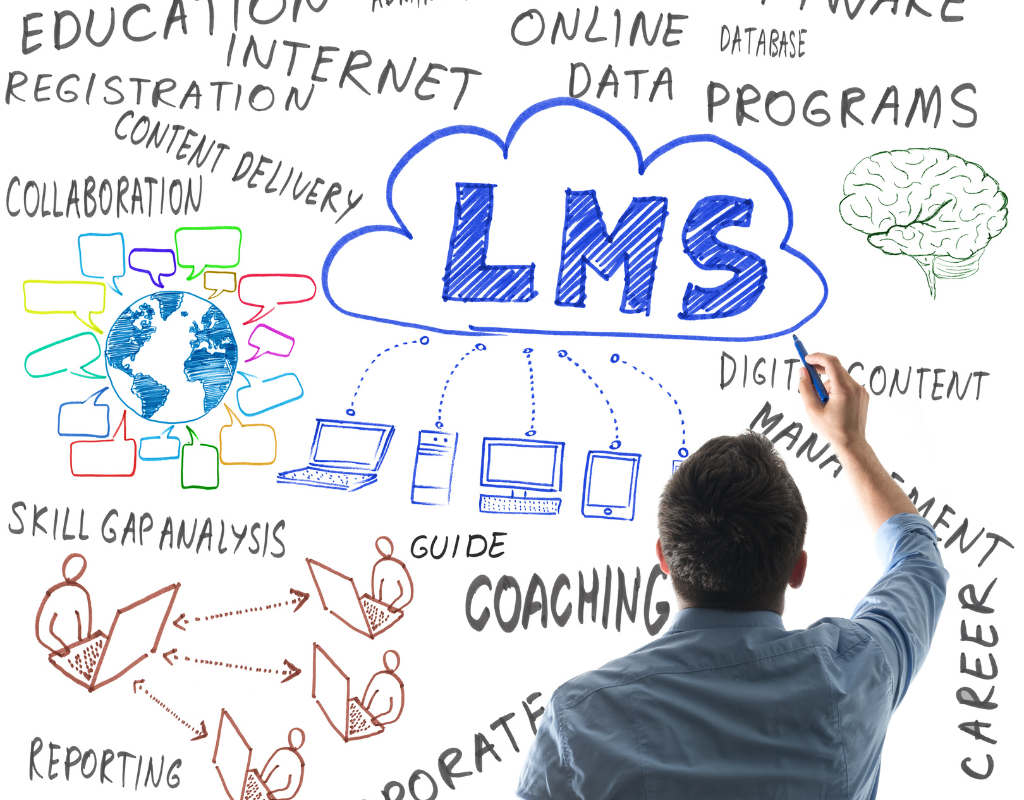Lockdown required around 1.2 billion children worldwide to attend school outside the home in 2020. We are still waiting for data on college students. The greater impact of this transition was that schools, colleges, and universities were confronted with the issues of remote learning and online teaching. Teachers, on the other hand, have to keep up with engaging pupils online long enough for true learning to occur.
Several institutions had the infrastructure to support distant learning, but thousands of them had to adapt and innovate in order to keep the educational process running. Though the Online Learning Management System (LMS) existed at the time to the pandemic, it has now become a must. LMS systems today provide the learning tools and platforms that teachers and learners require for efficient and constant learning.
What were the LMS solutions missing in 2020?
The year 2020 marked the first time that learners and educators decided to continue studying in the face of bad news. Additionally, most of them were inexperienced with Larvel eLearning solutions, making LMS software acceptance difficult. It was also difficult for parents, instructors, and students to break away from the convention because the classroom has long been the standard method of instruction around the world. Most educational institutions found it difficult to transition from the old system to the new one.
While many colleges and universities acquired or collaborated with Edtech platforms such as Udemy, Coursera, and others for online learning solutions or specific courses, flexibility remain slow. However, the most significant problem was a lack of flexibility with LMS capabilities, which failed to make specific platforms standout for their learners.
How can LMS features are designed differently in 2021?
#1 Start with empathy.
It is advised that developers use ‘design thinking.’ That means developers and lecturers must think like learners, or end-users. The design and LMS features must be simple to use not just for teachers but also for students. It should never come down to one or the other. Prior to the development phase, it is essential to establish user personas that are based on students.
#2 Consider both offline and online features
What effect does networking connectivity have on LMS features? Network connections, on the other hand, have proven to be the make-or-break aspect in the adoption of distance learning software. 100% network access at all times is required for a flawless studying and teaching experience. The easiest way to overcome this issue is for educators or app developers to focused on native software development and online at least technologies such as progressive web applications. The LMS system must be hybrid in terms of offline and online capabilities to support features such as offline document development and online tests and assignments or classroom setup.

#3 Simple Content Creation Tools
Teaching and learning are both developing processes that require ongoing material development. Students will create content such as writing, drawings/images, audio, and so on. Teachers, on the other hand, will be required to create content in the form of videos, examinations, quizzes, and examinations, among other things. A critical issue to consider during the development of eLearning software is the inclusion of features that will enable content creation with a broad enough scope.
#4 Community-focused tools
Individual users should never be considered while developing distance learning software. That means you’ll be working with parents, teachers, students, administrators, and executives, among other people. It is critical to select technologies that promote the formation of links and facilitate community interactions. For example, eLearning solutions like PowerLMS, Pear Deck, Seesaw, or Edpuzzle enable you to integrate speech or interactive material into your LMS. Another wonderful example is Flipgrid, which allows students to collaborate and hear one other’s voices asynchronously. To enable community involvement, services such as discussion boards, peer reviews, and so on must be available.
#5 High concurrency friendly
Making your LMS software high-concurrency friendly means enabling multiple actions involve multiple users to occur at once. This will make it easier for teachers and students to be active on the platform at the same time, executing session tasks such as document uploading, video classroom, or report management.
#6 Cross-platform connectivity
An LMS software will not survive in today’s scenarios if it cannot function on all platforms. Your remote learning software will be flawless if it has cross-platform features. This means that an Alexa device must be able to remind students when their homework is due, or a teacher must be able to turn up the assignments through Pages, MS Word, or Google doc, or students must be able to have an interactive lesson using a VR device. Another example of strong cross-platform integration is an AI-powered student tracking system that is also mobile-friendly.
#7 Consider the scalability factor.
A good LMS software should be both comprehensive and scalable. Scalability refers to a system’s ability to grow in terms of users and data storage capacity over time, as well as its ability to integrate with more conventional software used in schools and universities. As a result, a substantial number of students may return to school in 2021 and 2022.

The information gathered using an LMS programme must therefore be convertible to the conventional software used in schools and reusable. An online classroom, for example, must have a single location for weekly or daily updates, assignments and activities, meeting connections, feedback, learning resources, and simple access to all of these at a later stage.
Design Best Practices For LMS Software Development
- It’s crucial to have legible font. A lot of flashy or colourful fonts are difficult for many students to read, so avoid using them.
- Use lists and bullets in your text, not paragraphs.
- Use only one or two fonts.
- If you want to emphasise something, use colour coding, but only use one or two colours.
- Layout your pages clearly and simply.
- Folders inside folders or icons inside icons can be confusing, so navigation must be limited to a few clicks.
You should be aware of a number of additional factors when developing an LMS platform. However, the above advice is sufficient to get you going. Empathy for students or learners, however, is the most important aspect of developing and constructing successful LMS software. In facilitating eLearning solutions, this is exactly what our developers do when creating apps and platforms.
A well-designed PowerLMS solution can be the best option if you want to improve your learners’ learning experiences.
To Read More Tech Blogs Visit: Technical Nick

















